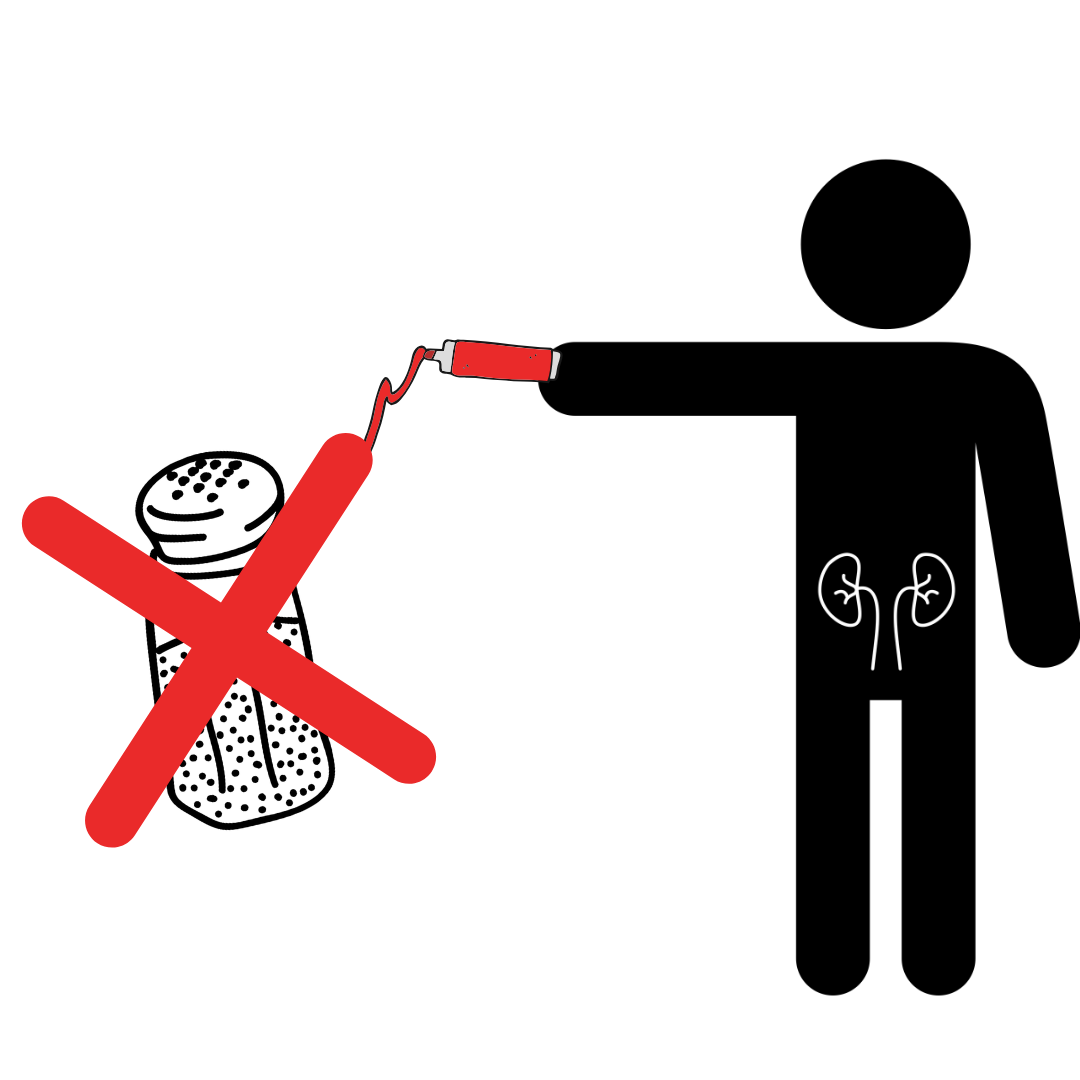Sodium is a mineral naturally present in foods, as well as the major component of the commonly used table salt (Sodium Chloride).
Our bodies need a small amount of sodium to function regularly, but an excess of this mineral can lead to hypertension and other serious health issues. The correct amount of sodium in a healthy person should not exceed 2,000 mg per day (equivalent to 5,000 mg of table salt, less than a tea spoon).[1] Most people consume daily around 9,000-12,000 mg of salt, almost twice the amount recommended by the World Health Organization (WHO).
If you are at risk of hypertension, heart disease or any kind of kidney disease, you should seriously consider to monitor and eventually reduce your salt intake. As high blood pressure may also damage your eyes and arteries, reduced salt intake also means less risk of developing diseases such as retinopathy and aneurysm. Indeed, the WHO reports, “An estimated 2.5 million deaths could be prevented each year if global salt consumption were reduced to the recommended level.”[2] Clearly, to control hypertension you also need to adopt a healthy lifestyle combining a balanced diet with regular physical activity, besides lowering the amount of sodium you consume daily.
You can begin your low-sodium diet by not adding salt during the preparation of foods and not having a salt shaker on the table. Once you feel comfortable with this step, you can start reducing/excluding certain processed foods (ready meals, bacon, ham and salami, cheese and salty snacks) and choose a low-sodium option for foods that you consume in large amounts, such as bread and cereal products. Sauces are another frequent source of salt/sodium (soy sauce and fish sauce are two examples). If this seems quite challenging, you may need the support of a dietitian or doctor, who will guide you and provide you with a personalized diet based specifically on your needs.
Are you worried that your new low-sodium diet will have no flavor? You may be right at first, but don’t worry! Taste buds adapt rapidly and after a few weeks you’ll be able to enjoy food with less salt. Afterwards, the salty foods you used to eat will taste too salty for you! Keep in mind that there is “one key to success: make the changes gradually and consistently over a period of time, rather than trying to cut back by a large amount all at once”.[3]
So, what are you waiting for? The earlier you start, the better!
If you have recently switched to a low-sodium diet and want to tell us your story, contact us for an interview at tara@worldkidneyday.org
[1] https://www.who.int/news-room/fact-sheets/detail/salt-reduction
[2] https://www.who.int/news-room/fact-sheets/detail/salt-reduction ; These recommendations do NOT apply to individuals with illnesses or those taking drug therapy that may lead to low sodium levels or acute build-up of body water, or require physician-supervised diets.
[3] https://www.health.harvard.edu/heart-health/conquering-your-salt-habit


